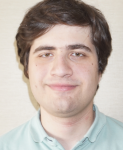Prof. Daniel Genkin

Short Biography
Daniel Genkin’s research interests are in cryptography and system security. He is interested in both theory and practice with particular interests in side-channel attacks, hardware security, cryptanalysis, secure multiparty computation (MPC), verifiable computation and SNARKS.
He is currently an Assistant Professor at the Department of Electrical Engineering and Computer Science at the University Of Michigan. Before that, he was a Postdoctoral Fellow at the University of Pennsylvania and the University of Maryland, where he was hosted by Prof. Nadia Heninger and Prof. Jonathan Katz. Previously he has been a Ph.D student at the Computer Science Department in the Technion — Israel’s Institute of Technology where he was co-advised by Prof. Yuval Ishai and Prof. Eran Tromer.
Talk Title: CacheOut: Leaking Data on Intel CPUs via Cache Evictions
Recent transient-execution attacks, such as RIDL, Fallout, and ZombieLoad, demonstrated that attackers can leak information while it transits through microarchitectural buffers. Named Microarchitectural Data Sampling (MDS) by Intel, these attacks are likened to “drinking from the firehose”, as the attacker has little control over what data is observed and from what origin. Unable to prevent the buffers from leaking, Intel issued countermeasures via microcode updates that overwrite the buffers when the CPU changes security domains.
In this talk we present CacheOut, a new microarchitectural attack that is capable of bypassing Intel’s buffer overwrite countermeasures. We observe that as data is being evicted from the CPU’s L1 cache, it is often transferred back to the leaky CPU buffers where it can be recovered by the attacker. CacheOut improves over previous MDS attacks by allowing the attacker to choose which data to leak from the CPU’s L1 cache, as well as which part of a cache line to leak. We demonstrate that CacheOut can leak information across multiple security boundaries, including those between processes, virtual machines, user and kernel space, and from SGX enclaves.